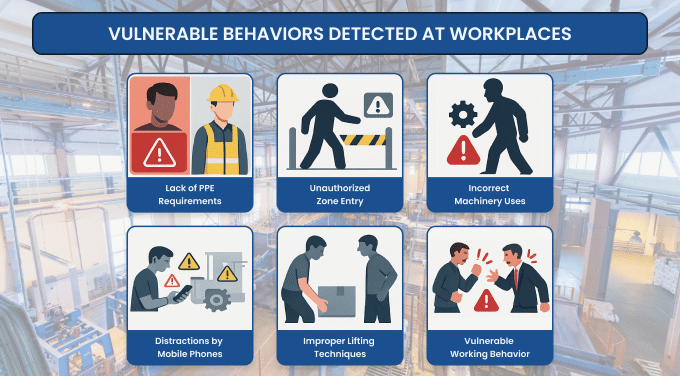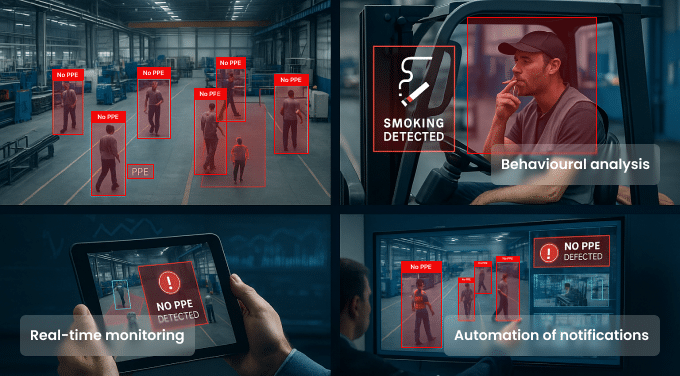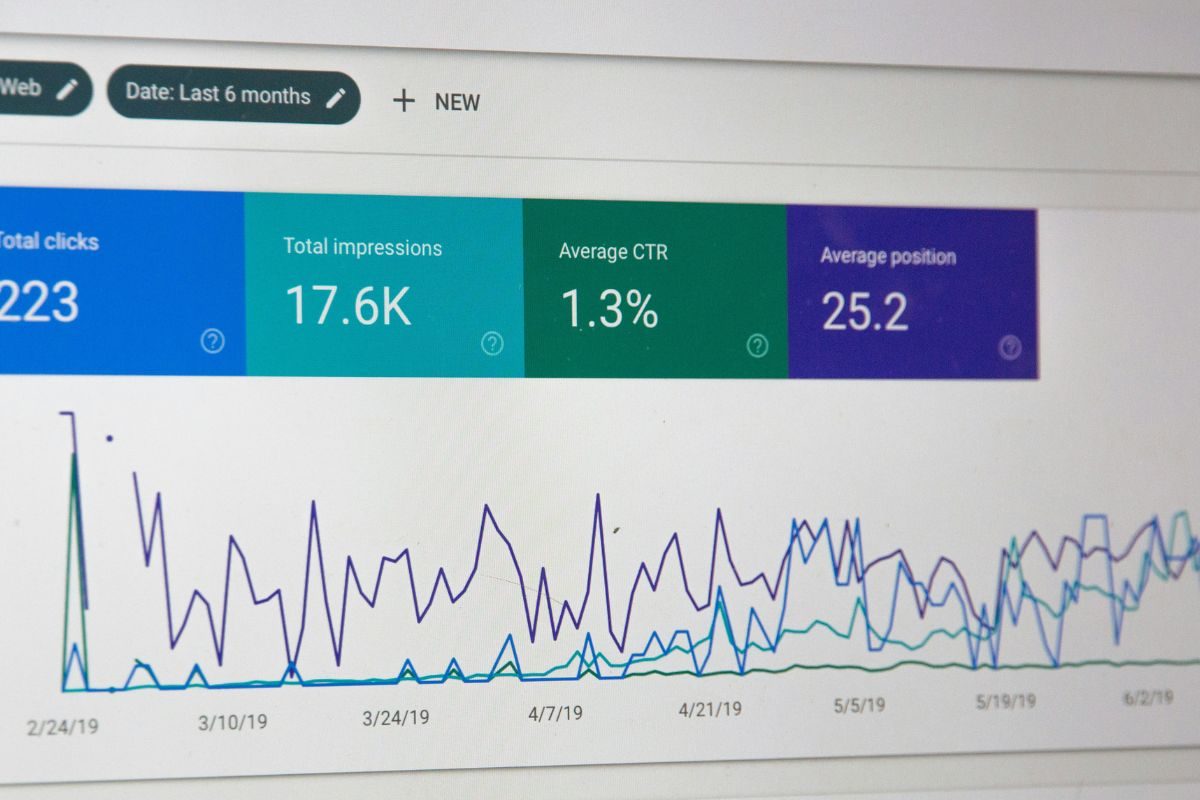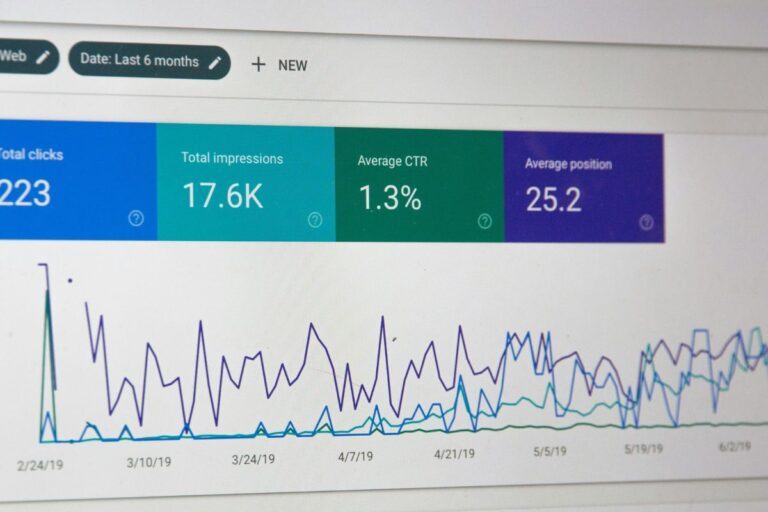Within hazardous work environments, workplace safety is one of the primary concerns of facilities like manufacturing, warehouses, construction, supply chain and logistics. Certain kinds of unsafe behaviors often contribute to fatalities within a workplace. For such infrastructure settings, workers almost remain under work pressure the entire time and there remain high chances of overlooking safety measures. Such mishaps could result in fatal consequences if not taken seriously. In the latest studies, statistics reported more than 88% of workplace accidents are a result of vulnerable behaviors and manual glitches. Besides leading to the unsafe workplace culture, it adds to detrimental injuries that are unavoidable.
Here comes the role of AI-powered solutions for workplaces. By leveraging advanced technologies such as computer vision, Generative AI and AI video analytics software, authorities can keep a close monitoring over the restricted areas, vulnerable behaviors, predictive dangers and so forth. It generates actionable insights that help to mitigate hazards prior to their escalation in terms of unsafe behavior detection.
This blogpost shows how AI-driven tech has revolutionized workplace safety with advanced protocols and prevents risky behaviors in such settings. To have a complete understanding of workplace incidents, it is important to understand the common unsafe practices workers act at workplaces.
Noting down the vulnerable behaviors detected at workplaces

Lack of PPE requirements
Working in hazard-prone workplaces requires active safety measures and PPE requirements. Lack of proper safety gears can result in severe risks within hazard-prone environments.
Unauthorized zone entry
Restricted zones come with dangers and individuals entering the zones without authorization often pose a serious risk.
Incorrect machinery uses
There are times when workers operate equipment without following safety protocols. The wrong tools often result in machinery malfunctions.
Improper lifting techniques
Construction and manufacturing facilities are teeming with heavy objects Without using proper techniques lifting these objects can pose serious injuries to workers.
Distractions by mobile phones
Using smartphones in workplaces are signs of distractions. These distractions could turn detrimental around heavy machinery and hazard-prone work environments.
Vulnerable working behavior
There are times when manufacturing facilities and construction work environments often confront aggressive behavior creating a threat to the overall safety of the working site.
The significance of Nextbrain’s behavior safety software solution

Designed for detecting risky behaviours, the computer vision for workplace safety administers immediate feedback to supervisors and workers. In a food manufacturing environment, Nextbrain’s Vision AI technology provides real-time monitoring over surveillance areas across different industries such as construction, manufacturing, warehouses, and many more.
To have a comprehensive understanding of AI-powered solutions for work environments, here we have curated the top real-world use cases.
Behavioural analysis
Computer vision AI systems are trained on specific datasets to analyze and generate actionable insights. Identifying patterns can contribute by alerting authorities on the detection of any kind of unscrupulous behaviour. For instance, if any vehicle driver is smoking through his driving sessions, AI can immediately detect the behavioural pattern and assess the predictive risks.
Real-time monitoring
AI video analytics software comes with a wide range of features within a labour-intensive workplace. It constantly monitors work environments administering instant feedback on unsafe behaviors. On detection of unauthorized access, it immediately triggers and sends notifications to the operating authorities seeking a prompt response.
Automation of notifications
As the AI video analytics software detects any kind of vulnerable actions and behaviour, the system automatically sends alerts to authorities. Workers
should use safety equipment while entering the red zone premises. In a manufacturing facility, whenever a worker is detected without proper precautions, it triggers an alert seeking immediate action.
Conclusion
AI systems are in heightened demand across various industries. Nowadays, organizations are prioritizing workers’ safety and preventing vulnerable behaviours. It improves communication and enforces a culture of safety within various modes of workplaces. The scenario of workplace safety is up for a major transformation. Holding hands with advanced computer vision AI, we strive to help businesses who want to elevate their prospects by leveraging AI, computer vision, deep learning and machine learning.
Looking to build your next project using computer vision AI? Nextbrain got it covered for you. Connect with our specialists and upgrade your workplace safety with computer vision.
Frequently asked questions
What is AI video analytics software?
AI video analytics software leverages AI algorithms for analyzing different data types such as video content, and objects, and detecting patterns and anomalies in real time. It uses deep learning, computer vision, real-time batch processing and algorithmic processing to generate actionable insights.
How does Nextbrain’s AI-powered software improve workplace safety with unsafe behaviour detection?
At Nextbrain, we have designed AI-equipped safety management software offering real-time monitoring and automated alerts for preventing any kind of unsafe behaviour in the workplace. It analyzes workplace conditions administering insights that improve overall AI in workplace safety.
How can generative AI improve safety management across workplaces?
Generative AI can effectively improve workplace safety by aiming to enhance hazard identification and leveraging predictive maintenance. Analyzing real-time data from IP cameras/other sources helps in preventing incidents from escalating.
Does it integrate with existing systems and cameras?
Yes, Nextbrain’s vision AI can be easily integrated with existing systems making it simpler for businesses and organizations.














